- Home
- John Updike
The Early Stories: 1953-1975
The Early Stories: 1953-1975 Read online
The Early Stories is a work of fiction. Names, characters, places, and incidents are the products of the author’s imagination or are used fictitiously. Any resemblance to actual events, locales, or persons, living or dead, is entirely coincidental.
2012 Random House Trade Paperback Edition
Copyright © 2003 by John Updike
All rights reserved.
Published in the United States by Random House Trade Paperbacks, an imprint of The Random House Publishing Group, a division of Random House, Inc., New York.
RANDOM HOUSE TRADE PAPERBACKS and colophon are trademarks of Random House, Inc.
Originally published in hardcover in the United States by Alfred A. Knopf, a division of Random House, Inc., in 2003.
The quotations from St. Augustine’s Confessions in “Believers” and “Augustine’s Concubine” are as translated by Edward B. Pusey; in “Believers,” the quotation from the Venerable Bede is from The Old English Version of Bede’s Ecclesiastical History of the English People, ed. T. Miller.
Eighty of these stories were first published in The New Yorker. The other twenty-three appeared in the following magazines thus:
The Atlantic Monthly: “Augustine’s Concubine,” “Nakedness.” Audience: “Minutes of the Last Meeting,” “When Everyone Was Pregnant.” Big Table: “Archangel.” Esquire: “The Slump,” “The Tarbox Police.” Harper’s Magazine: “Believers,” “Eros Rampant,” “Sublimating,” “Your Lover Just Called.” New World Writing: “The Sea’s Green Sameness.” Oui: “Transaction.” Playboy: “Gesturing,” “I Am Dying, Egypt, Dying,” “Killing,” “Nevada.” The Saturday Evening Post: “Eclipse,” “The Lucid Eye in Silver Town.” The Transatlantic Review: “The Crow in the Woods,” “During the Jurassic,” “The Invention of the Horse Collar,” “Under the Microscope.”
Library of Congress Cataloging-in-Publication Data
Updike, John.
[Short stories. Selections]
The early stories, 1953–1975 / John Updike.
p. cm.
eISBN: 978-0-307-41702-2
1. United States—Social life and customs—20th century—Fiction. I. Title.
PS3571.P4A6 2003
813′.54—dc21 2002044824
Cover design: Gabrielle Bordwin
Cover photograph: © Dave Bradley/Getty Images
www.atrandom.com
2 4 6 8 9 7 5 3 1
v3.1
Contents
Cover
Title Page
Copyright
Foreword
OLINGER STORIES
You’ll Never Know, Dear, How Much I Love You
The Alligators
Pigeon Feathers
Friends from Philadelphia
A Sense of Shelter
Flight
The Happiest I’ve Been
The Persistence of Desire
The Blessed Man of Boston, My Grandmother’s Thimble, and Fanning Island
Packed Dirt, Churchgoing, a Dying Cat, a Traded Car
In Football Season
OUT IN THE WORLD
The Lucid Eye in Silver Town
The Kid’s Whistling
Ace in the Hole
Tomorrow and Tomorrow and So Forth
The Christian Roommates
Dentistry and Doubt
A Madman
Still Life
Home
Who Made Yellow Roses Yellow?
His Finest Hour
A Trillion Feet of Gas
Dear Alexandros
The Doctor’s Wife
At a Bar in Charlotte Amalie
MARRIED LIFE
Toward Evening
Snowing in Greenwich Village
Sunday Teasing
Incest
A Gift from the City
Walter Briggs
The Crow in the Woods
Should Wizard Hit Mommy?
Wife-Wooing
Unstuck
Giving Blood
Twin Beds in Rome
Marching through Boston
Nakedness
FAMILY LIFE
The Family Meadow
The Day of the Dying Rabbit
How to Love America and Leave It at the Same Time
The Music School
Man and Daughter in the Cold
The Rescue
Plumbing
The Orphaned Swimming Pool
When Everyone Was Pregnant
Eros Rampant
Sublimating
Nevada
The Gun Shop
Son
Daughter, Last Glimpses of
THE TWO ISEULTS
Solitaire
Leaves
The Stare
Museums and Women
Avec la Bébé-Sitter
Four Sides of One Story
The Morning
My Lover Has Dirty Fingernails
Harv Is Plowing Now
I Will Not Let Thee Go, Except Thou Bless Me
TARBOX TALES
The Indian
The Hillies
The Tarbox Police
The Corner
A & P
Lifeguard
The Deacon
The Carol Sing
The Taste of Metal
Your Lover Just Called
Commercial
Minutes of the Last Meeting
Believers
Eclipse
FAR OUT
Archangel
The Dark
The Astronomer
The Witnesses
A Constellation of Events
Ethiopia
Transaction
Augustine’s Concubine
During the Jurassic
Under the Microscope
The Baluchitherium
The Invention of the Horse Collar
Jesus on Honshu
The Slump
The Sea’s Green Sameness
THE SINGLE LIFE
The Bulgarian Poetess
The Hermit
I Am Dying, Egypt, Dying
Separating
Gesturing
Killing
Problems
The Man Who Loved Extinct Mammals
Love Song, for a Moog Synthesizer
Books by John Updike
About the Author
Foreword
This is a collection. A selection, surely, is best left to others, when the writer is no longer alive to obstruct the process. Any story that makes it from the initial hurried scribbles into the haven of print possesses, in this writer’s eyes, a certain valor, and my instinct, even forty years later, is not to ditch it but to polish and mount it anew. However, I did omit two stories, “Intercession” and “The Pro,” which were already safely reprinted in Golf Dreams (1996), and two more, “One of My Generation” and “God Speaks,” which, both of them first-person reminiscences based on college memories, trembled insecurely on the edge of topical humor, and felt dated.
These grudging omissions left one hundred and three stories, composed between 1953 and 1975. The oldest is “Ace in the Hole,” submitted toward the end of 1953 by a married Harvard senior to Albert Guerard’s creative-writing course. Guerard, the very model of a cigarette-addicted Gallic intellectual, who nonetheless faithfully attended the Crimson’s home basketball games, liked the story—he said it frightened him, an existential compliment—and suggested I send it to The New Yorker, which turned it down. The next year, though, after “Friends from Philadelphia” and some poems had been accepted by the magazine in my first post-collegiate summer, I resubmitted the story and it was accepted. With modifications to the coarse exchange with which it begins, it was run in Apr
il of 1955, toward the back of the magazine; such was the reading public’s appetite for fiction then that “casuals” (a curious in-house term lumping fiction and humor) appeared in “the back of the book” as well as up front. The story is entangled, in my memory of those heady days of the dawning literary life, with the sudden looming, in the lobby of the Algonquin, of J. D. Salinger, a glowingly handsome tall presence not yet notoriously reclusive; he shook my hand before we were taken in to lunch with our respective editors, William Shawn and Katharine White. He said, or somebody later said he said, that he had noticed and liked “Ace in the Hole.” His own stories, encountered in another writing course (taught by Kenneth Kempton), had been revelations to me of how the form, terse and tough in the Thirties and Forties, could accommodate a more expansive post-war sense of American reality; the bottle of wine that ends “Friends from Philadelphia” owes something to the Easter chick found in the bottom of the wastebasket at the end of “Just Before the War with the Eskimos.” But my main debt, which may not be evident, was to Hemingway; it was he who showed us all how much tension and complexity unalloyed dialogue can convey, and how much poetry lurks in the simplest nouns and predicates. Other eye-openers for me were Franz Kafka and John O’Hara, Mary McCarthy and John Cheever, Donald Barthelme and Vladimir Nabokov, James Joyce and James Thurber and Anton Chekhov.
The year 1975 seemed an apt cut-off; it was the one and only full year of my life when I lived alone. My marriage, of twenty-two years, to a barefoot, Unitarian, brunette Radcliffe graduate was ending, but all of these stories carry its provenance. Perhaps I could have made a go of the literary business without my first wife’s faith, forbearance, sensitivity, and good sense, but I cannot imagine how. We had lived, from 1957 on, in Ipswich, a large, heterogenous, and rather out-of-the-way town north of Boston, and my principal means of support, for a family that by 1960 included four children under six, was selling short stories to The New Yorker. I had in those years the happy sensation that I was mailing dispatches from a territory that would be terra incognita without me. The old Puritan town was rich in characters and oral history. Though my creativity and spiritual state underwent some doldrums, the local life and the stimulation of living with growing children, with their bright-eyed grasp of the new, never left me quite empty of things to say. A small-town boy, I had craved small-town space. New York, in my twenty months of residence, had felt full of other writers and of cultural hassle, and the word game overrun with agents and wisenheimers. The real America seemed to me “out there,” too homogenous and electrified by now to pose much threat of the provinciality that people used to come to New York to escape. Out there was where I belonged, immersed in the ordinary, which careful explication would reveal to be extraordinary. These notions propelled the crucial flight of my life, the flight from the Manhattan—the Silver Town, as one of my young heroes pictures it—that I had always hoped to live in. There also were practical attractions: free parking for my car, public education for my children, a beach to tan my skin on, a church to attend without seeming too strange.
I arrived in New England with a Pennsylvania upbringing to write out of my system. The first section of these early stories, “Olinger Stories,” appeared as a Vintage paperback in 1964. It has been long out of print, though a few professors who used to assign it have complained. Its eleven stories constitute, it may be, a green and slender whole—the not unfriendly critic Richard Locke once wrote of their “hothouse atmosphere”—but the idea of assembling my early stories (half of them out of print) presented, to me, no temptation stronger than the one of seeing Olinger Stories back together. Their arrangement, which is in order of the heroes’ ages, has been slightly changed: “Flight” and “A Sense of Shelter” both feature a high-school senior, but the one of “Flight” seemed on reconsideration older, further along in his development. All the stories draw from the same autobiographical well—the only child, the small town, the grandparental home, the move in adolescence to a farm—but no attempt is made at an overall consistency. As I wrote in the original introduction,
I have let the inconsistencies stand in these stories. Each started from scratch. Grand Avenue here is the Alton Pike there. In “Pigeon Feathers” the grandfather is dead, in “Flight” the grandmother. In fact, both of my mother’s parents lived until I was an adult. In fact, my family moved eleven miles away from the town when I was thirteen; in “Friends from Philadelphia” the distance is one mile, in “The Happiest I’ve Been” it has grown to four. This strange distance, this less than total remove from my milieu, is for all I know the crucial detachment of my life.… The hero is always returning, from hundreds of miles finally.
And, intoxicated by the wine of self-exegesis, I went on:
It surprised me, in making this arrangement, to realize that the boy who wrestles with H. G. Wells and murders pigeons is younger than the one who tells Thelma Lutz she shouldn’t pluck her eyebrows. But we age unevenly, more slowly in society than in our own skulls. Among these eleven brothers, some are twins. John Nordholm and David Kern, having taken their turn as actors, reappear as narrators. And optically bothered Clyde Behn seems to me a late refraction of that child Ben who flees the carnival with “tinted globes confusing his eyelashes.”
Of the sections that follow, two, “Out in the World” and “Tarbox Tales,” take their titles from a Penguin collection, Forty Stories, selected by me and published in 1987. Their contents, however, have shifted and expanded, and the remaining five sections are newly invented, to give some friendly order—as in my five non-fiction collections—to so large a number of items. As the writer-editor shuffles his stories back and forth, he begins to see all sorts of graceful and meaningful transitions and subsurface currents: each set seems to have a purling flow that amounts to a story of its own, a story in turn part of a larger tale, the lived life evoked by these fragments chipped from experience and rounded by imagination into impersonal artifacts. The reader, however, does not have access to the writer’s core of personal memory, and is furthermore free to read the stories in any order he chooses. Each is designed to stand on its own, though perhaps the stories concerning Joan and Richard Maple, scattered herein though collected in a Fawcett paperback called (after a television script) Too Far to Go (1979) and in a Penguin edition titled (by me) Your Lover Just Called, do gain from being grouped. My other sequential protagonist, the writer Henry Bech, is represented only by his first manifestation, when I didn’t know he was to star in an ongoing saga, now bound in The Complete Henry Bech (Everyman’s).
The index dates the titles by the time of composition rather than of publication. Introducing Forty Stories, I wrote, “Social contexts change; it is perhaps useful to know that ‘The Hillies’ was written in 1969, and ‘A Gift from the City’ in 1957.” And that “Ethiopia” was written when Haile Selassie was still in power and “Transaction” when “transactional analysis” was the hottest psychological fad. Rereading everything in 2002, I was startled by the peaceful hopes attached to Iraq in “His Finest Hour,” amazed by the absurdly low prices of things in Fifties and Sixties dollars, and annoyed by the recurrence of the now suspect word “Negro.” But I did not change it to “black”; fiction is entitled to the language of its time. And verbal correctness in this arena is so particularly volatile that “black,” which is inaccurate, may some day be suspect in turn. “Negro” at least is an anthropological term, unlike the phrase “of color,” which reminds me that in my childhood the word “darkie” was, in the mouths of middle-aged ladies, the ultimate in polite verbal discrimination. As to the word “fairies,” used twice in “The Stare” to refer to gay men, I doubt that it was ever not offensive to those designated, but it was much used, with its tinge of contempt, by heterosexuals of both genders, and after pondering, pencil in hand, for some pained minutes, I let it remain, as natural to the consciousness of the straight, distraught male who is my protagonist. After all, The New Yorker’s fastidious editors let it slip by, into the issue of April 3, 1965. In
general, I reread these stories without looking for trouble, but where an opportunity to help my younger self leaped out at me, I took it, deleting an adjective here, adding a clarifying phrase there. To have done less would have been a forced abdication of artistic conscience and habit. In prose there is always room for improvement, well short of a Jamesian overhaul into an overweening later manner.
My first editor at The New Yorker was Katharine White, who had done so much to shape the infant magazine only three decades before. After accepting four stories of mine and sending back a greater number, she, with her husband, came to visit the young Updikes and their baby girl in Oxford, and offered me a job at the magazine. Of the year or two when we shared the premises—before she followed E. B. White to Maine, giving up the high position of fiction editor—I remember her technique of going over proofs with me side by side at her desk, which made me fuzzy-headed and pliant, and how she once wrinkled her nose when asking me if I knew why my writing, in the instance before us, wasn’t very good. She had made her way in Harold Ross’s otherwise all-boy staff and could be brusque, though there was no mistaking her warm heart and high hopes for the magazine. My next editor, until 1976, was never brusque; William Maxwell brought to his editorial functions a patient tact and gentle veracity that offered a life-lesson as much as a lesson in writing. My fiction editor since has been Katharine White’s son, Roger Angell, whose continued vitality and sharpness into his eighties gives me, at the outset of my seventies, hope for the future. All three, not to mention the unsung copyeditors and fact checkers, contributed many improving touches to these stories and on occasion inspired large revisions, though my theory in general is that if a short story doesn’t pour smooth from the start, it never will. Though it was more than once alleged, in the years 1953–75, that The New Yorker promoted a gray sameness in its fiction, it permitted me much experimentation, from the long essayistic conglomerations capping the Olinger stories to the risky and risqué monologues of “Wife-Wooing” and “Lifeguard.” The editors published so much fiction they could run the impulsive brief opus as well as the major effort, and as William Shawn settled into his long reign he revealed a swashbuckling streak of avant-gardism, a taste for Barthelme and Borges that woke up even the staidest in his stable to new possibilities.

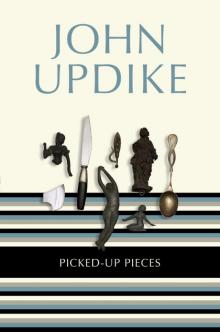 Picked-Up Pieces: Essays
Picked-Up Pieces: Essays Bech: A Book
Bech: A Book Roger's Version: A Novel
Roger's Version: A Novel Seek My Face
Seek My Face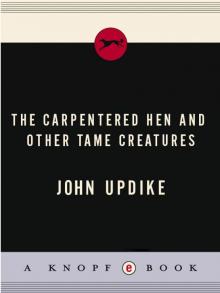 The Carpentered Hen
The Carpentered Hen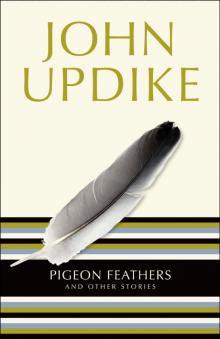 Pigeon Feathers: And Other Stories
Pigeon Feathers: And Other Stories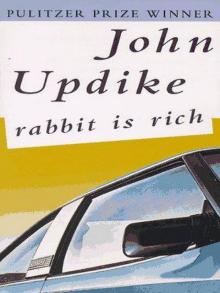 Rabbit Is Rich
Rabbit Is Rich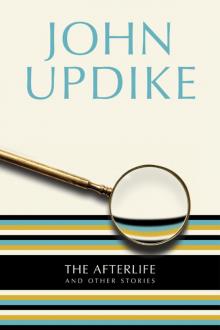 The Afterlife: And Other Stories
The Afterlife: And Other Stories Rabbit at Rest
Rabbit at Rest The Witches of Eastwick
The Witches of Eastwick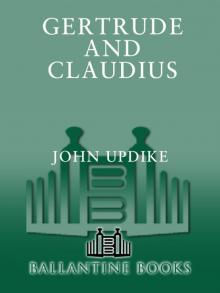 Gertrude and Claudius
Gertrude and Claudius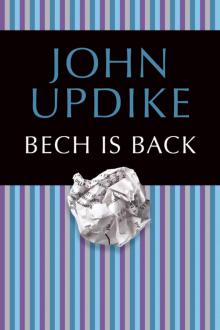 Bech Is Back
Bech Is Back Hub Fans Bid Kid Adieu: John Updike on Ted Williams
Hub Fans Bid Kid Adieu: John Updike on Ted Williams Marry Me: A Romance
Marry Me: A Romance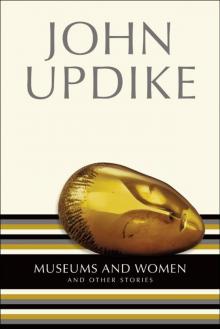 Museums and Women: And Other Stories
Museums and Women: And Other Stories My Father's Tears and Other Stories
My Father's Tears and Other Stories Collected Poems, 1953-1993
Collected Poems, 1953-1993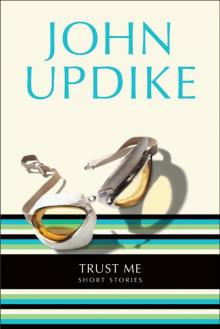 Trust Me: Short Stories
Trust Me: Short Stories Odd Jobs: Essays and Criticism
Odd Jobs: Essays and Criticism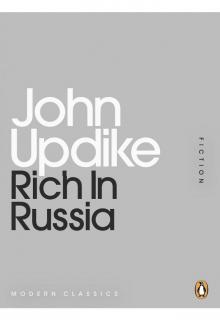 Rich in Russia
Rich in Russia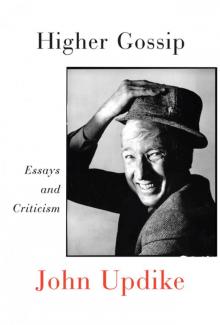 Higher Gossip: Essays and Criticism
Higher Gossip: Essays and Criticism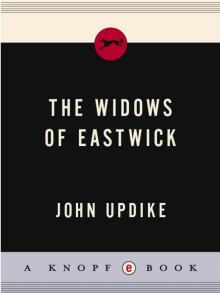 The Widows of Eastwick
The Widows of Eastwick In the Beauty of the Lilies
In the Beauty of the Lilies Rabbit, Run
Rabbit, Run The Early Stories: 1953-1975
The Early Stories: 1953-1975 Rabbit Redux
Rabbit Redux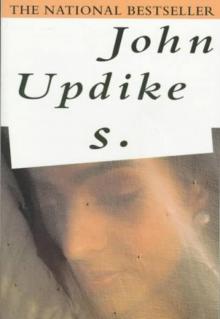 S.
S.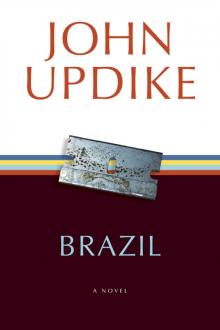 Brazil
Brazil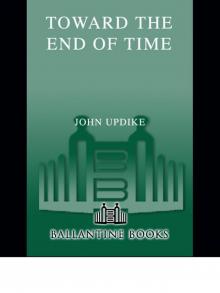 Toward the End of Time
Toward the End of Time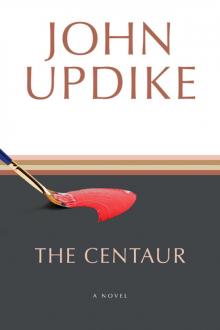 The Centaur: A Novel
The Centaur: A Novel Assorted Prose
Assorted Prose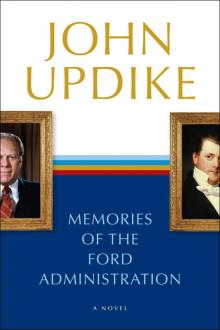 Memories of the Ford Administration
Memories of the Ford Administration Terrorist
Terrorist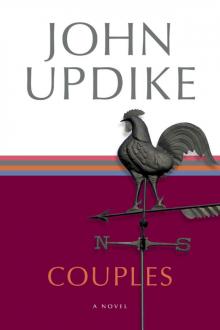 Couples: A Novel
Couples: A Novel Bech at Bay
Bech at Bay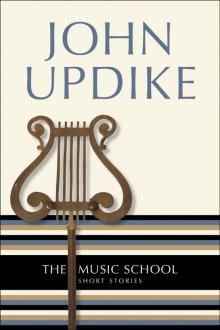 The Music School: Short Stories
The Music School: Short Stories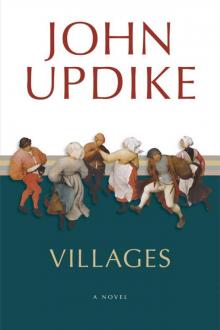 Villages
Villages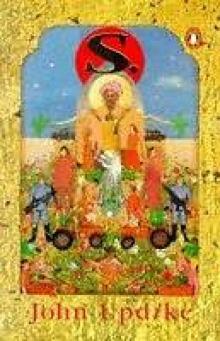 S
S Roger's Version
Roger's Version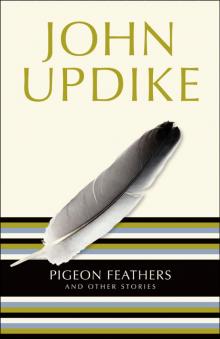 Pigeon Feathers
Pigeon Feathers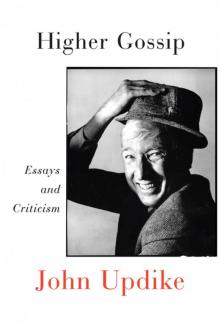 Higher Gossip
Higher Gossip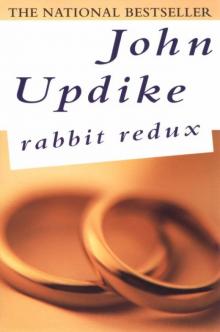 Rabbit Redux r-2
Rabbit Redux r-2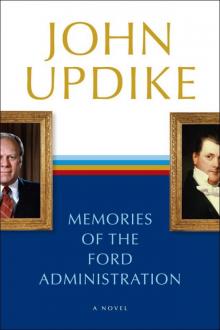 Memories of the Ford Administration: A Novel
Memories of the Ford Administration: A Novel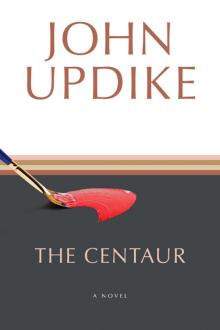 The Centaur
The Centaur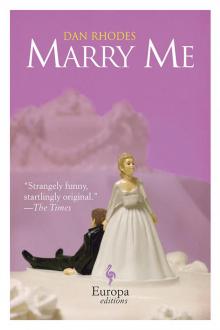 Marry Me
Marry Me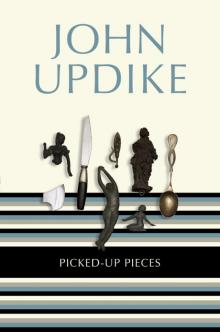 Picked-Up Pieces
Picked-Up Pieces Bech
Bech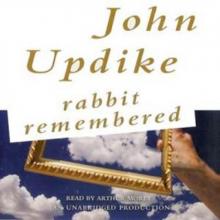 Rabbit Remembered
Rabbit Remembered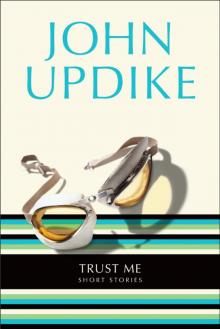 Trust Me
Trust Me The Early Stories
The Early Stories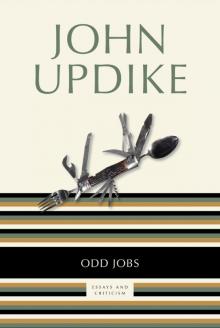 Odd Jobs
Odd Jobs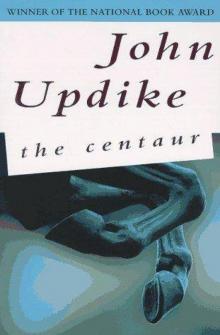 The Centaurus
The Centaurus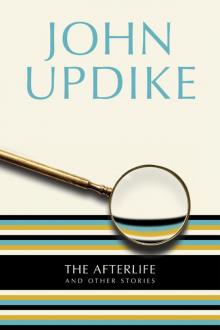 The Afterlife
The Afterlife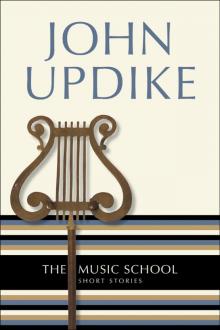 The Music School
The Music School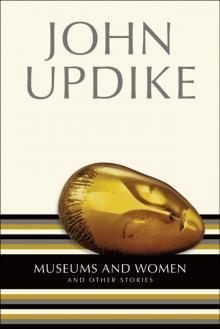 Museums and Women
Museums and Women Couples
Couples